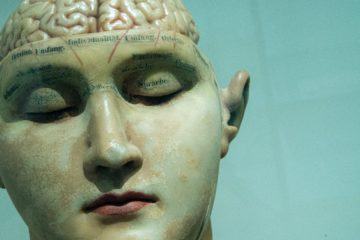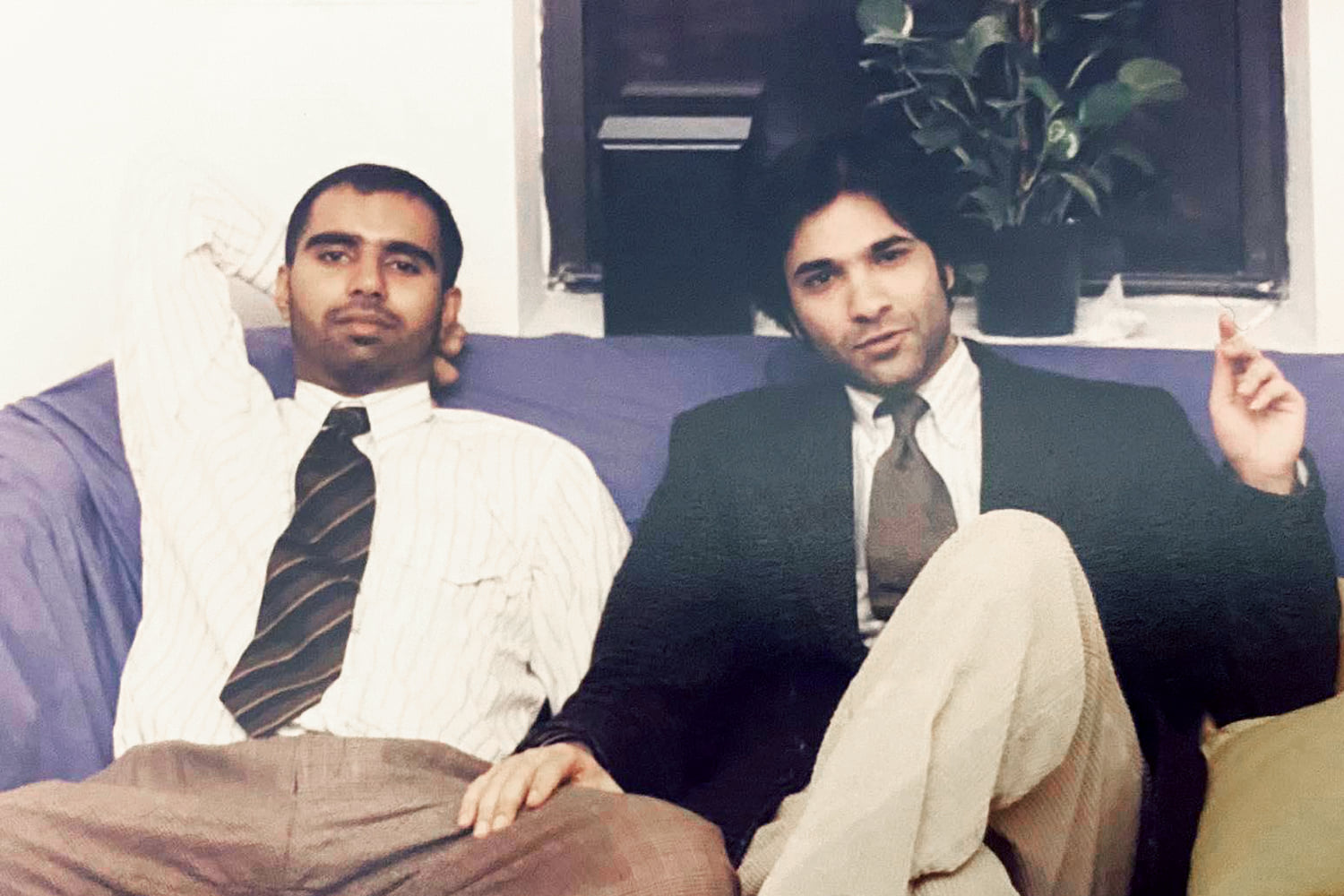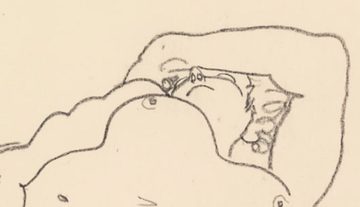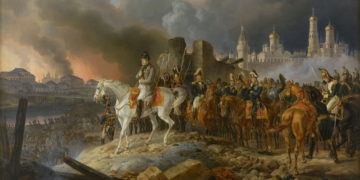Month: September 2021
Phil Schaap, Grammy-Winning Jazz D.J. and Historian, Dies at 70
 Neil Genzlinger in The New York Times (photo by Sara Krulwich/The New York Times):
Neil Genzlinger in The New York Times (photo by Sara Krulwich/The New York Times):
Phil Schaap, who explored the intricacy and history of jazz in radio programs that he hosted, Grammy-winning liner notes that he wrote, music series that he programmed and classes that he taught, died on Tuesday in Manhattan. He was 70.
His partner of 17 years, Susan Shaffer, said the cause was cancer, which he had had for four years.
Mr. Schaap was host of an assortment of jazz radio programs over the years, but he was perhaps best known as a fixture on WKCR-FM, the student-run radio station of Columbia University, where his delightfully (some would say infuriatingly) obsessive daily program about the saxophonist Charlie Parker, “Bird Flight,” was an anchor of the morning schedule for decades.
On that show, he would parse Parker recordings and minutiae endlessly. In a 2008 article about Mr. Schaap in The New Yorker, David Remnick described one such discourse in detail, relating Mr. Schaap’s aside about the Parker track “Okiedoke,” which veered into a tangent about the pronunciation and meaning of the title and its possible relation to Hopalong Cassidy movies.
“Perhaps it was at this point,” Mr. Remnick wrote, “that listeners all over the metropolitan area, what few remained, either shut off their radios, grew weirdly fascinated, or called an ambulance on Schaap’s behalf.”
More here.
The Mind Does Not Exist
 Joe Gough in Aeon (Photo by David Matos on Unsplash):
Joe Gough in Aeon (Photo by David Matos on Unsplash):
Someone’s probably told you before that something you thought, felt or feared was ‘all in your mind’. I’m here to tell you something else: there’s no such thing as the mind and nothing is mental. I call this the ‘no mind thesis’. The no-mind thesis is entirely compatible with the idea that people are conscious, and that they think, feel, believe, desire and so on. What it’s not compatible with is the notion that being conscious, thinking, feeling, believing, desiring and so on are mental, part of the mind, or done by the mind.
The no-mind thesis doesn’t mean that people are ‘merely bodies’. Instead, it means that, when faced with a whole person, we shouldn’t think that they can be divided into a ‘mind’ and a ‘body’, or that their properties can be neatly carved up between the ‘mental’ and the ‘non-mental’. It’s notable that Homeric Greek lacks terms that can be consistently translated as ‘mind’ and ‘body’. In Homer, we find a view of people as a coherent collection of communicating parts – ‘the spirit inside my breast drives me’; ‘my legs and arms are willing’. A similar view of human beings, as a big bundle of overlapping, intelligent systems in near-constant communication, is increasingly defended in cognitive science and biology.
The terms mind and mental are used in so many ways and have such a chequered history that they carry more baggage than meaning. Ideas of the mind and the mental are simultaneously ambiguous and misleading, especially in various important areas of science and medicine. When people talk of ‘the mind’ and ‘the mental’, the no-mind thesis doesn’t deny that they’re talking about something – on the contrary, they’re often talking about too many things at once. Sometimes, when speaking of ‘the mind’, people really mean agency; other times, cognition; still others, consciousness; some uses of ‘mental’ really mean psychiatric; others psychological; others still immaterial; and yet others, something else.
This conceptual blurriness is fatal to the usefulness of the idea of ‘the mind’.
More here.
Turbulent Music, Turbulent Life

Adam Kirsch in The New York Review of Books:
Early in E.M. Forster’s novel Howards End, the Schlegel sisters, Margaret and Helen, attend a performance of Beethoven’s Fifth Symphony. For Helen, the flighty younger sister, the music functions as the soundtrack to a story unfolding in her mind. She identifies the symphony’s themes with characters and events—heroes, shipwrecks, elephants dancing. Most important is the third movement, the Scherzo, whose main theme represents “a goblin walking quietly over the universe, from end to end.” The goblin theme insinuates to Helen that there is “no such thing as splendor or heroism in the world,” and the movement represents Beethoven’s struggle to vanquish this nihilistic thought. It is seemingly overcome by a new theme, a heroic recasting of the symphony’s opening four-note call, but then the goblin theme returns for a last, ghostly repetition, which Helen sees as Beethoven’s acknowledgment that evil and despair can never be permanently overcome. “Panic and emptiness! Panic and emptiness! Even the flaming ramparts of the world might fall,” Forster writes. “The goblins were there. They could return. He had said so bravely, and that is why one can trust Beethoven when he says other things.”
The novel goes on to prove the point: when Helen rushes out of the hall, overcome by emotion, she accidentally takes an umbrella belonging to Leonard Bast, setting in motion a chain of events that will end in his ruin and death. Forster seems to be suggesting that Helen’s way of listening to Beethoven reveals the same character flaws that will lead her to destroy Leonard. She is a romantic egoist, more interested in the fantasy she creates about the Fifth Symphony than in the music itself. Whereas the wiser Margaret Schlegel, Forster says, “can only see the music,” just as she sees the reality of other people’s lives.
More here.
Maggie Nelson & Hari Kunzru discuss Nelson’s “On Freedom”
The History of Dreams
Sarah Lyall at the NYT:
 In the winter of 1995, the Brazilian neuroscientist Sidarta Ribeiro moved to New York to pursue his Ph.D. at Rockefeller University. His arrival, he writes in his fascinating, discursive new book, “The Oracle of Night,” precipitated one of the strangest periods of his life.
In the winter of 1995, the Brazilian neuroscientist Sidarta Ribeiro moved to New York to pursue his Ph.D. at Rockefeller University. His arrival, he writes in his fascinating, discursive new book, “The Oracle of Night,” precipitated one of the strangest periods of his life.
Overcome by a sudden, inexplicable lassitude, Ribeiro did little but attend classes, read and sleep. But his sleep was exciting and revelatory, full of vivid, evocative dreams that enriched his waking hours. “I began to dream in English,” he writes, “and my dreams became even more intense, with representations of epic narratives through unnaturally deserted New York streets on the sunny, icy morning of an endless Sunday.”
This period lasted for several months and then abruptly ended.
more here.
On Freedom: Four Songs of Care and Constraint
Joanna Kavenna at Literary Review:
 Nelson is an award-winning essayist and poet, whose previous works include a collection of aphorisms mainly about the colour blue, Bluets; two books about the murder of her aunt, Jane: A Murder and The Red Parts; a meditation on violence and art, The Art of Cruelty; and perhaps her best-known book, The Argonauts, about love, pregnancy and motherhood, among other things. People often say that Nelson’s work defies genre but this is the least interesting aspect of her writing – since around 1910 (with apologies to Woolf), defying genre has been a genre in itself. More interesting is the boundlessly inventive way Nelson deals with questions of authority and fragility, or how to say anything at all when reality has gone AWOL.
Nelson is an award-winning essayist and poet, whose previous works include a collection of aphorisms mainly about the colour blue, Bluets; two books about the murder of her aunt, Jane: A Murder and The Red Parts; a meditation on violence and art, The Art of Cruelty; and perhaps her best-known book, The Argonauts, about love, pregnancy and motherhood, among other things. People often say that Nelson’s work defies genre but this is the least interesting aspect of her writing – since around 1910 (with apologies to Woolf), defying genre has been a genre in itself. More interesting is the boundlessly inventive way Nelson deals with questions of authority and fragility, or how to say anything at all when reality has gone AWOL.
Nelson asks: what do we mean when we speak of freedom? ‘Positive freedom? Anarchist freedom? Marxist freedom? Abolitionist freedom? Libertarian freedom?’ All or none of the above? She wonders if people are losing their appetite for freedom, citing James Baldwin: ‘I have met only a very few people … who had any real desire to be free.’
more here.
What Made Them Do Their Duty?
Victor David Hanson in City Journal: (Autumn 2001)
 From the very first moments of the World Trade Center horror, the valor and élan of New York’s firemen, together with that of the city’s police and emergency forces, have transfixed the whole nation—especially us in rural America who rarely see the real Gotham. Danger was nothing to them, courage and honor everything. They responded instantly to the explosion and fire, all drawn to, rather than repelled by, the inferno—and without regard to their own safety or the consequences of their possible incineration upon their loved ones at home. We now know their last radio cries: “Move away from the towers! Everyone move away from the towers!” Silence. . . .
From the very first moments of the World Trade Center horror, the valor and élan of New York’s firemen, together with that of the city’s police and emergency forces, have transfixed the whole nation—especially us in rural America who rarely see the real Gotham. Danger was nothing to them, courage and honor everything. They responded instantly to the explosion and fire, all drawn to, rather than repelled by, the inferno—and without regard to their own safety or the consequences of their possible incineration upon their loved ones at home. We now know their last radio cries: “Move away from the towers! Everyone move away from the towers!” Silence. . . .
As the ghastly rubble gets turned over, we find their remains in clusters—four incinerated here, ten buried there, 14 caught en masse in a stairwell, where they had guided the panicked down as they themselves ascended to their deaths: “All nonessential personnel move away from that building!” The antithesis, left unsaid, is obvious: “All necessary rescuers get into that building!”
So many of them disappeared—at least 388 firefighters—because in a heartbeat they chose to race into the flames and smoke rather than to hesitate and accept the obvious: that the towers were already death traps. In the tradition of all great American armies in battle, officers—47 lieutenants, 20 captains, and 21 chiefs—died alongside the rank and file, heroic death requiring no prerequisite of class or color. Indeed, the magnitude of the terrorist-inflicted disaster rivaled that of a fierce battle, where the enemy overruns and annihilates an entire military unit—paramedics, a fire marshal, even the fire department’s chaplain were engulfed. Remarkably, moments after the buildings collapsed, there were even more rescue workers on the scene than before. It is human to flee from a place of death; the firemen and the police were almost inhuman in mounting so quickly the rubble that buried their brethren.
More here.
The Forgotten Black Heroes of 9/11: More Evidence of Discriminatory Denial
Linn Washington Jr. in Counterpunch:
 These Black heroes of 9/11 valiantly battled terrorism. But the sacrifices of these Black heroes will receive no recognition during the commemorations around America for the 20th Anniversary of what is considered the most tragic terrorist attack ever conducted on America soil. These heroes, William Parker and his colleagues, confronted terrorists on 9/11 in defense of freedom and liberty – professed pillars of democracy in America. Although badly outnumbered, these Black heroes successfully battled the armed terrorists whose onslaught included threats to employ a weapon of massive destruction. While the anti-terrorism actions of Parker and his band of Black heroes did occur on 9/11 those actions did not occur on ‘that’ 9/11.
These Black heroes of 9/11 valiantly battled terrorism. But the sacrifices of these Black heroes will receive no recognition during the commemorations around America for the 20th Anniversary of what is considered the most tragic terrorist attack ever conducted on America soil. These heroes, William Parker and his colleagues, confronted terrorists on 9/11 in defense of freedom and liberty – professed pillars of democracy in America. Although badly outnumbered, these Black heroes successfully battled the armed terrorists whose onslaught included threats to employ a weapon of massive destruction. While the anti-terrorism actions of Parker and his band of Black heroes did occur on 9/11 those actions did not occur on ‘that’ 9/11.
The so-called “Christiana Riot” on September 11, 1851, involved Parker and his band battling a group of slave catchers from Maryland who sought return of three Blacks who fled the enslavement of a Methodist minister in Baltimore. The continued failure of America to recognize the contributions of these Black heroes constitutes a tragedy larger than 9/11 itself. This failure to learn from the lessons these Black heroes taught is tied into many of the tribulations that now ravage America domestically and internationally.
Most Americans know nothing about these Black 9/11 heroes, some of whom went on to fight in America’s bloodiest war. Compounding this lack of awareness is the fact that the possibility of more Americans learning about these heroes is now under brutal attack across the country from conservative driven campaigns to kill instructional initiatives to expose institutional racism like Critical Race Theory and the New York Times’ award-winning 1619 Project. Their actions on September 11, 1851, made national news, far beyond the small village of Christiana located about 50-miles west of Philadelphia in what is now Lancaster County. The terrorism that Parker and his band battled in 1851 was the brand of deadly domestic terrorism that predates America’s “War on Terror.”
More here.
Saturday Poem
Study of Two Pears
….. I
Opsculum Paedagogum.
The pears are not viols,
Nudes or bottles.
They resemble nothing else.
….. II
They are yellow forms
Composed of curves
Bulging toward the base.
They are touched red.
….. III
They are not flat surfaces
Having curved outlines.
They are round
Tapering toward the top.
….. IV
In the way they are modelled
There are bits of blue.
A hard dry leaf hangs
From the stem.
….. V
The yellow glistens.
It glistens with various yellows,
Citrons, oranges, and greens
Flowering over the skin.
….. VI
The shadows of the pears
Are blobs on the green cloth.
The pears are not seen
As the observer wills.
by Wallace Stevens
from News of the Universe
Sierra Club Books, 1995
9:59 AM
by S. Abbas Raza
I just looked over at my digital clock and it happens to be 9:59 am.
At 9:59 am on September 11, exactly 20 years ago, I watched the South Tower of the World Trade Center collapse live on TV sitting in my living room only a few miles away and first realized that life was about to change in a big way, that we were living a pivotal moment of history. And I knew I would still be speaking of what was happening in that moment decades later. And I am.
And then the second tower fell. I didn’t know it at the time, but in that very moment my friend Ehtesham had died.
So it has been 20 years. Sitting outside at a cafe on Broadway in Manhattan that afternoon, fear and the smell of smoke in the air, government agents on street corners with submachine guns, military aircraft in the sky, I was naive enough to think that perhaps we would learn some valuable lessons from the events of that morning, that we might change some of the policies which led to such disasters. How foolish that thought seems in retrospect; how much the opposite of what actually followed.
Here’s something I wrote five years after that day as part of a series of reflections we published on the 5th anniversary of the attacks at 3QD.
And you can see other articles from that series here.
Finally, this is what I wrote about Ehtesham when Osama Bin Laden was killed.
And here Ehtesham and I are sitting in the same place in my Manhattan living room from which I later would watch the collapse of the tower in which he died.

RIP Ehtesham U. Raja
Lean In Sexuality and the Labor of Self-Discovery
Sarah Stoller in the Los Angeles Review of Books:
 You don’t have to look far in 2021 to come across the celebratory rhetoric of women’s sexual empowerment. Were it not for ongoing reports of sexual harassment and abuse in the wake of the #MeToo movement, it might appear at a glance that we now live in a fully liberated era of sexuality for women, the culmination of decades of feminist progress. In addition to popular new guides to women’s sexual pleasure like OMGyes, recent years have seen the mainstreaming of porn by and for women by figures like Erika Lust; the popularization of sex therapy; the rise of posh, ticketed, women’s-only sex parties; the ongoing proliferation of sex toys for women; and the diversification of sexual pleasure for lesbian, bi, and trans women — all accompanied by an insistence that closing the so-called “orgasm gap” is now within reach.
You don’t have to look far in 2021 to come across the celebratory rhetoric of women’s sexual empowerment. Were it not for ongoing reports of sexual harassment and abuse in the wake of the #MeToo movement, it might appear at a glance that we now live in a fully liberated era of sexuality for women, the culmination of decades of feminist progress. In addition to popular new guides to women’s sexual pleasure like OMGyes, recent years have seen the mainstreaming of porn by and for women by figures like Erika Lust; the popularization of sex therapy; the rise of posh, ticketed, women’s-only sex parties; the ongoing proliferation of sex toys for women; and the diversification of sexual pleasure for lesbian, bi, and trans women — all accompanied by an insistence that closing the so-called “orgasm gap” is now within reach.
The declaration that women’s sexuality is no longer secret or shameful has arrived in tandem with the promise that women can, and therefore should, know their desires, declare them proudly, and go about fulfilling them. In a landscape of apparently unbounded opportunities for self-realization and pleasure, it can now seem as though the not-yet-transcendentally-satisfied woman has only herself to blame. And why not?
More here.
‘Genetic fossil’: intact DNA from woman who lived 7,200 years ago discovered in Indonesia
Donna Lu in The Guardian:
 The remains, belonging to a teenager nicknamed Bessé, were discovered in the Leang Panninge cave on the Indonesian island of Sulawesi. Initial excavations were undertaken in 2015.
The remains, belonging to a teenager nicknamed Bessé, were discovered in the Leang Panninge cave on the Indonesian island of Sulawesi. Initial excavations were undertaken in 2015.
The discovery, published in the journal Nature, is believed to be the first time ancient human DNA has been discovered in Wallacea, the vast chain of islands and atolls in the ocean between mainland Asia and Australia.
The DNA was extracted from the petrous part of Bessé’s temporal bone, which houses the inner ear.
Griffith University’s Prof Adam Brumm, who co-led the research, said the intact DNA was a rare find.
More here.
Too Good To Check: A Play In Three Acts
Scott Alexander in Astral Codex Ten:

In case you find this hard to follow: ivermectin is an antiparasitic drug that looked promising against COVID in early studies. Later it started looking less promising, and investigators found that a major supporting study was fraudulent. But by this point it had gotten popular among conspiracy theorists as a suppressed coronavirus cure that They Don’t Want You To Know.
The media has tried to spread the word that the scientific consensus remains skeptical. In the process, they may have gone a little overboard and portrayed it as the world’s deadliest toxin that will definitely kill you and it will all somehow be Donald Trump’s fault. It turned into the latest culture war issue, and now there’s a whole discourse on (for example) how supposedly-sober fact-checkers keep calling it “a horse dewormer” (it is used to deworm horses, but it’s also FDA-approved for humans, but lots of the people using it are buying the horse version), and probably this is hypocritical in some way.
Enter the article above. A doctor named Jason McElyea apparently told local broadcaster KFOR that Oklahoma hospitals are “overwhelmed” with ivermectin poisoning cases, so much so that “gunshot victims” are “left waiting”. Some of the world’s biggest news outlets heard the story and ran with it. The tweet mentions the Rolling Stone version, but the same story, with the same doctor’s testimony, got picked up by The Guardian, the BBC, Yahoo News, etc.
More here.
Carlo Rovelli’s rebellious past and how it made him a better scientist
A bacterial toolkit for plants
Rekha Seshadri in Nature:
 Close your eyes and imagine stalks of barley and corn waving gently against a butterscotch-coloured sky under the light of Phobos and Deimos — on the ruddy plains of a terraformed Mars! Although this science fiction fantasy has been re-imagined many times in cinema and print, the following recent studies bring this make-believe scenario infinitesimally closer to the realm of credibility. But more urgently, these studies begin to address potential solutions for alleviating pressures arising from agricultural burdens and climate change on our own planet.
Close your eyes and imagine stalks of barley and corn waving gently against a butterscotch-coloured sky under the light of Phobos and Deimos — on the ruddy plains of a terraformed Mars! Although this science fiction fantasy has been re-imagined many times in cinema and print, the following recent studies bring this make-believe scenario infinitesimally closer to the realm of credibility. But more urgently, these studies begin to address potential solutions for alleviating pressures arising from agricultural burdens and climate change on our own planet.
Geddes, Paramasivan, Joffrin et al.1 successfully engineered Medicago trunculata (barrelclover) and Hordeum vulgare (barley, a cereal crop) with a synthetic pathway for bacterial-derived rhizopine, which was exuded into the plant root milieu and functioned as a signal to recruit a rhizopine biosensor-carrying Rhizobium leguminosarum. Engineering crops, cereals in particular, to gain important nutrients such as N2 without costly and environmentally detrimental fertilizer input is the ‘Holy Grail’ of agronomists, and the study by Geddes et al.1 proves this goal is achievable. N2 fixing bacteria or other growth-promoting bacteria could be specifically recruited and induced by engineering plant signalling and control. Also evidenced in this study, a lack of comprehensive functional knowledge of genes that participate in rhizopine metabolism proved an impediment, and considerable effort was expended in elucidating the native bacterial pathway, with partial success. Ultimately, success was achieved with an alternate rationally designed pathway (comprising genes from two different bacterial sources) that was transferred to the plant host with the desired effects.
More here.
Friday Poem
Animals
At night a knot of sea-lions lies off the shore
In the slow swell between the rock and the cliff,
Sharp flippers lifted, or great-eyed heads, as they roll in the sea,
Bigger than draft horses, and barking like dogs
Their all-night song. It makes me wonder a little
That life near kin to human, intelligent, hot-blooded, idle and
… singing, can float at ease
In the ice-cold midwinter water. Then, yellow dawn
Colors the south, I think about the rapid and furious lives
… in the sun:
They have little to do with ours; they have nothing to do with
… oxygen and salted water; they would look monstrous
If we could see them : the beautiful passionate bodies of living
… flame, batlike flapping and screaming,
Tortured with burning lust and acute awareness, that ride the
… storm-tides
Of the great fire-globe. They are animals as we are. There are
… many other chemistries of animal life
Besides the slow oxidation of carbohydrates and amino-acids.
by Robinson Jeffers
from News of the Universe—
… Poems of Twofold Consciousness chosen by Robert Bly
Sierra Club Books, 1995
Moses Sumney – Cut Me
Tolstoy’s Case Against Making War Humane
Samuel Moyn at Lit Hub:
 It would take Tolstoy some time to sound the alarm that humanitarianism could entrench war. On the way to doing so, he had one of his most famous characters embrace the inverse proposition: brutality can make it rare.
It would take Tolstoy some time to sound the alarm that humanitarianism could entrench war. On the way to doing so, he had one of his most famous characters embrace the inverse proposition: brutality can make it rare.
“One thing I would do if I had the power,” Prince Andrei, the debonair and reflective leading man of War and Peace, declares, “I would not take prisoners.” It comes to the hero as an epiphany: if in battle an enemy soldier were captured, or if he laid down his arms and surrendered, it should not save him from death. No one today thinks it is permissible to kill enemies in war summarily when they are captured or surrender. In fact, to do so is today a gross war crime. How could Andrei take a position that would have made even the worst counselors of inhumanity in recent American wars—George W. Bush’s lawyers, who exempted the country precisely from rules about how to treat captives—blanch?
more here.
Tolstoy’s Uncommon Sense and Common Nonsense
Yiyun Li at The Paris Review:
 Books that I feel drawn to and reread, War and Peace among them, are full of uncommon sense and common nonsense. (Uncommon nonsense makes exhilarating literature, too, in Lewis Carroll’s case, but uncommon nonsense does better to stay uncommon: in less skillful hands, it becomes caprice or parody.)
Books that I feel drawn to and reread, War and Peace among them, are full of uncommon sense and common nonsense. (Uncommon nonsense makes exhilarating literature, too, in Lewis Carroll’s case, but uncommon nonsense does better to stay uncommon: in less skillful hands, it becomes caprice or parody.)
One imagines that Tolstoy did not seek to write about uncommon sense. He simply presented the world, and the world, looked at closely, is often extraordinary. A line I never tire of in War and Peace: “The transparent sounds of hooves rang out on the planks of the bridge.”
Colors are regularly described as “muted” or “loud,” but sounds that are transparent make a reader pause. The ringing hooves take me back to my early childhood in Beijing, where cars were scarce, and flatbed horse trailers passed in the street, carrying coal, lumber, produce, and sometimes people huddled together.
more here.
